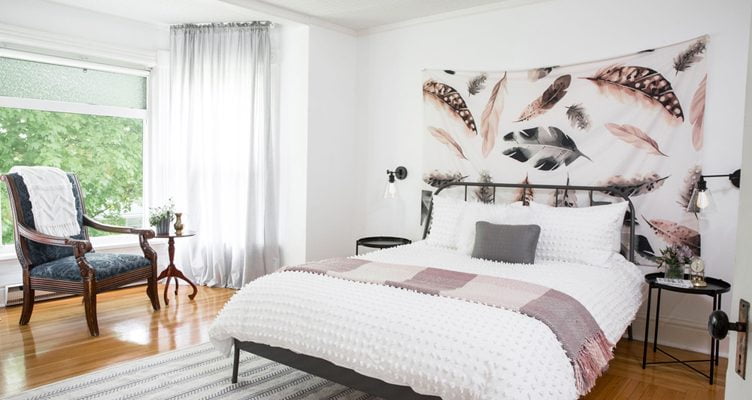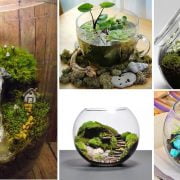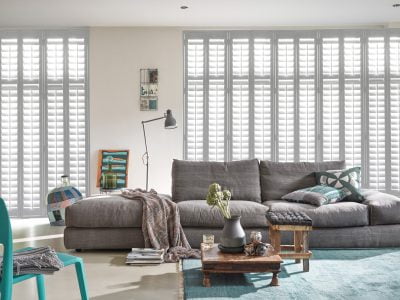Not everyone has the luxury of a large, spacious bedroom in terms of dimensions.
But you can take the smart approach and make it appear roomy, airy and sizable. Get tips from hollywoodmirrors.co.uk
And while you’re about it, remember small is not just beautiful, it’s also convenient, easy to look after and much more intimate and cozy than a vast expanse of space.
If you’ve just moved into a home with a smaller bedroom, or you’re decorating a dinky little spare bedroom, it’s wise to first figure out how much time you have to complete the project.
What’s Great About Planning?
Perhaps you don’t have too many hours to spare in the midst of your busy schedule and you’d like to complete job quickly.
The trick is to spend a little more time and effort on planning before you launch the actual work.
- It helps you chart out the entire project so you don’t have to keep winging it
- You don’t waste time and resources on realigning goals
- Makes the goals easier to interpret and measure
Project: To Make A Small Bedroom Look Bigger In A Short Time
1. Analyze: This is the core of the planning aspect. Figure out
- who’s going to use the room
- what’s the budget (remember to include transportation, shipping etc)
- will you have to hire help or is it a DIY job
- how where will you get materials
- and finally when to start and what’s your deadline.
2. Measure: When we say “small” or “big” remember that it’s a relative term. What one person describes as small could be average or large for someone else and vice versa. Take accurate measurements so that you get the exact dimensions of the room down on paper. Remember to take floor, wall and ceiling measurements. If you plan to purchase new furniture, ensure that it fits and matches if you have wooden gate designs for your bedroom. For old furniture that you already have, you can plan the placement so that it all falls in place.
3. Color Palette: Visually, smart color choices are a great way to open up the room. Softer, lighter hues pull the eyes away from the walls and ceiling giving the illusion of more space than there actually is. Darker shades draw the eyes towards them making distances seem shorter. This is a technique that’s often used in art and you can use it to get the effect you want.
An open, airy and light feel can be achieved with paler colors. Blond, pale pink/lavender are colors that are pleasant and soothing, while eggshell blue and watery sea-green are cool and airy.
White is a great choice because it has a highly reflective quality. You can get a peaceful and serene ambiance with the cloudy effect of different shades of white. It also blurs the borders between floor/ceiling/walls giving the effect of a larger, less constricted space.
However, you don’t want the room to resemble a hospital cubicle, so break the monochromatic effect with clever placement of artwork, accessories, furniture, rugs, shelving, etc. By all means, avoid the “white box” appearance that gives it a cold, clinical look.
Thinking out of the box, make bold color choices with charcoal, taupe, steel gray or navy blue. To make the room look larger using these dark shades takes real design skill with aesthetic placement of the other elements in the room.
4. Tricks with Colors: Painting the ceiling a slightly darker shade and making it a focal point with pendant lights, painted polka dots/stars etc draws the eye upwards immediately.
The trim on the top of walls can be painted a lighter color for a similar effect. You can also paint doors, ceiling and trim in the same color. Contrast walls are going rapidly down the popularity scale, but as a design element, they can still give the illusion of space.
Vertical or horizontal striped painted on the walls, paneling, or wallpaper allow eye movement that gives the feeling of space. Fix a focal point in the room, such as artwork, or even your bed to grab attention and take away from the room’s real size.
5. Furniture: Think low is the mantra here. The biggest item of furniture in your bedroom is obviously the bed, so select one that’s lower in height, and in a lighter shade of wood or paint.
Built in closets are a great way to organize your stuff. Have sliding doors and plan the shelving so that everything has a place. Mirror-fronted doors do double duty as a dressing aide, while reflecting space and light.
A clever trick is to have “leggy” free-standing furniture. They allow space to show through. A similar illusion can be created with transparent (lucite, glass) shelves, table-tops and chairs. It’s a slick trick to get furniture that offer storage space, such as beds, ottomans, shelves concealed behind doors, etc.
Use lighter shades for bed-covers, throws, curtains, rugs and soft furnishings. They’re harder to keep clean, but make sure that they’re in low-maintenance fabrics.
6. Materials and Fabrics: Keep the illusion of space going with light, airy and natural fabrics in pale colors. Since you spend a third of your life sleeping, it’s important that your bedroom has proper light control and this doesn’t mean that you bring in some maximus camera floodlight for your bedroom. Black-out blinds are a good idea as they can be rolled up when not in use. Don’t clutter with too many small rugs on the floor, and opt for wall-to-wall carpeting if you need floor covering. Or opt for blond/pale wooden or tiled flooring.
Use light-colored woods but if you’re not a great fan of the Scandinavian school of interior design, choose paler shades of wood or paint for your bed, closets, shelves and other furniture.
7. Bring It All Together: Decide the theme you’d like to portray in your small bedroom. Cozy? Minimalist? Uncluttered? Light and Peaceful? This helps you to put all the elements together in an integrated way. Use mirrors and natural light wherever possible. If you don’t have windows, check if you can open a skylight or ventilator close to the ceiling to let in sunlight.
Keep the room neat and uncluttered. This is the biggest advantage of a small bedroom, so make the most of it!









Comments